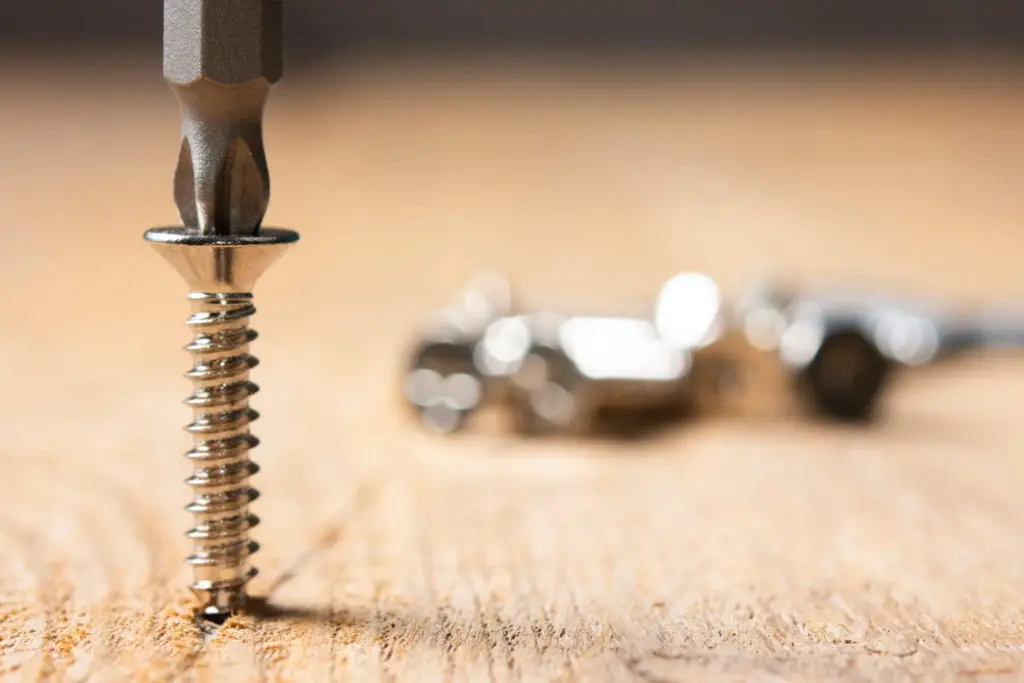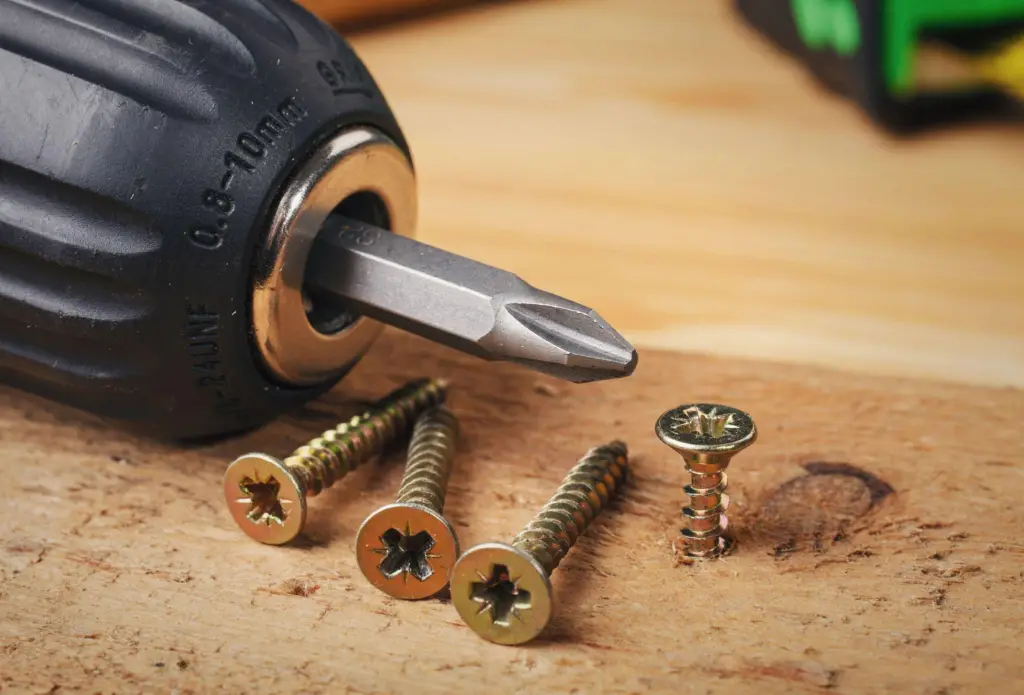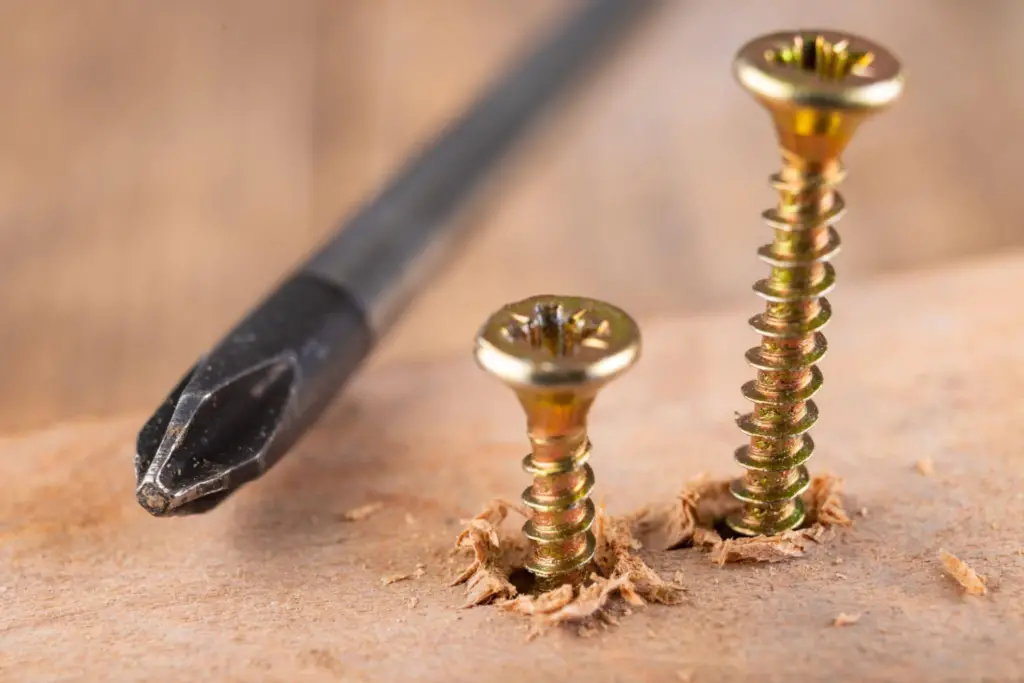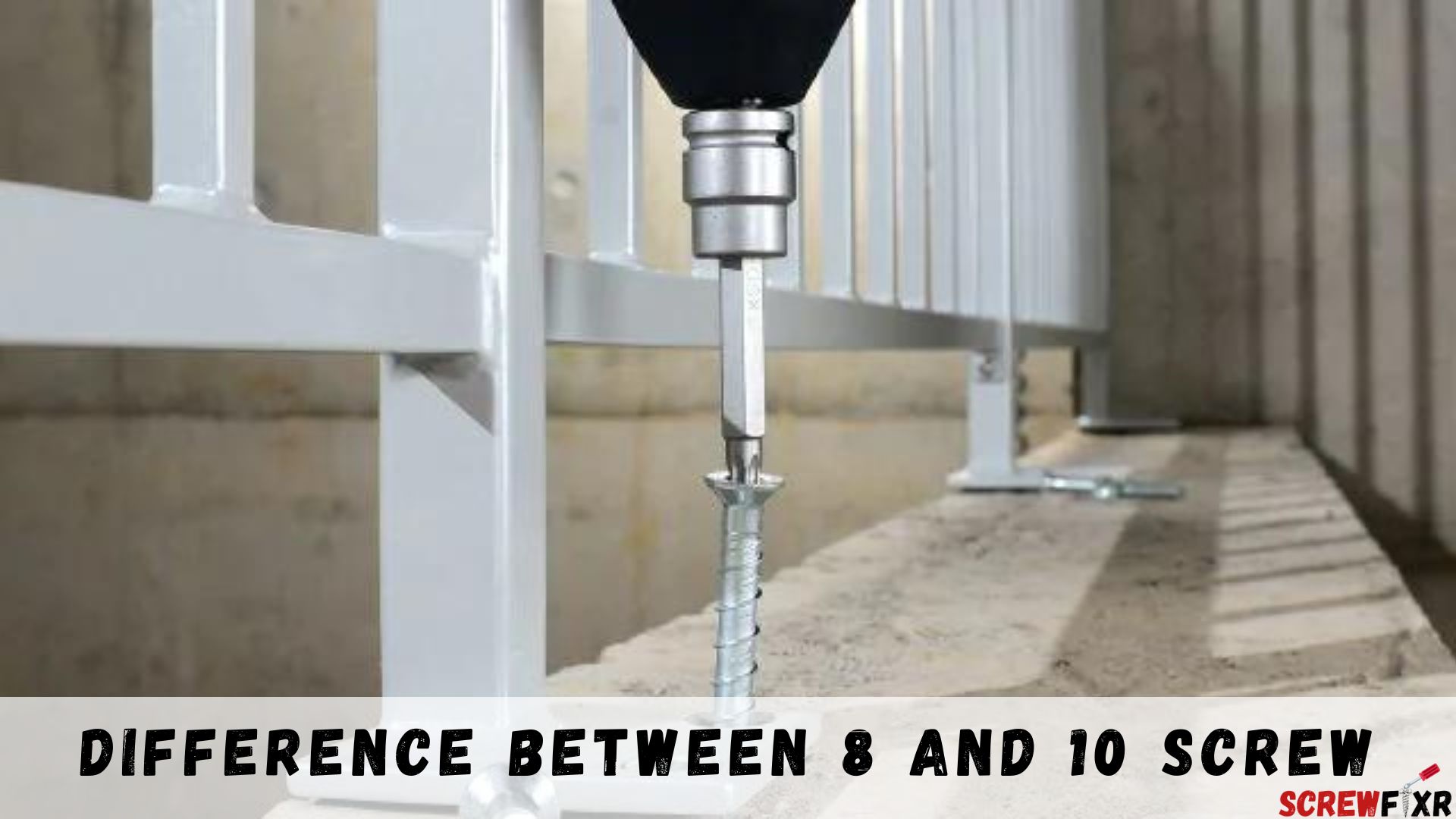In the world of construction and DIY projects, the choice of fasteners can significantly impact the structural integrity and overall success of your endeavors. Among the many types of screws available, the Difference Between 8 and 10 Screw is a common point of confusion. This article aims to clarify this matter and provide you with the knowledge needed to select the right screws for your specific needs.
Difference Between 8 and 10 Screw

When it comes to screws, the numbers 8 and 10 refer to the gauge or thickness of the screw. Understanding this difference is crucial for ensuring that your screws can effectively hold together the materials you’re working with. Let’s dive into the specifics of each:
The 8 Screw
Description and Characteristics of an 8 Screw
The “8 screw,” often referred to as an “M8” in metric sizing, is a versatile fastener with distinct characteristics:
- Diameter: An 8 screw typically has an 8mm diameter (approximately 5/16 inches in imperial units).
- Thread Pitch: The thread pitch, or the distance between threads, varies depending on the type of 8 screw but is generally standard for the size.
- Head Type: 8 screws come with a variety of head types, such as pan, flat, hex, or round, each designed for specific applications.
- Material: They are available in various materials, including steel, stainless steel, and brass, to suit different project requirements.
Common Applications for 8 Screws
8 screws find extensive use across various industries and DIY projects due to their versatility. Common applications include:
- Furniture Assembly: 8 screws are often used in assembling furniture, securing legs, brackets, and other components.
- Construction: In construction, these screws are employed for framing, attaching drywall, and other structural applications.
- Automotive: Automotive enthusiasts use 8 screws for tasks like securing body panels and interior components.
- Machinery: In industrial settings, 8 screws play a role in assembling machinery and equipment.
- Woodworking: Woodworkers utilize these screws for joinery, cabinetry, and other woodworking projects.
Advantages and Disadvantages of Using 8 Screws
Advantages:
- Strong and Durable: 8 screws, being relatively thick, offer excellent tensile strength and durability, making them suitable for heavy-duty applications.
- Versatile: They are versatile enough to work well in wood, metal, and plastic, making them a go-to choice for various projects.
- Widespread Availability: 8 screws are widely available in hardware stores, ensuring easy sourcing.
Disadvantages:
- Size Limitations: Due to their thickness, 8 screws may not be suitable for applications with limited space or where a more discreet fastening solution is required.
- Weight: In some cases, the added weight of larger screws may not be desirable, especially in lightweight applications.
Availability and Types of 8 Screws
8 screws are readily available in a range of types to suit specific needs:
- Machine Screws: Designed with a threaded shaft and a uniform diameter, machine screws are ideal for use with nuts or in tapped holes.
- Wood Screws: Featuring a tapered point, wood screws are tailored for woodworking and can self-drill into wood.
- Sheet Metal Screws: Equipped with sharp threads and a flat head, these screws are used for fastening metal sheets.
- Self-Tapping Screws: These screws have a sharp tip and are often used to create their threads in materials like plastic or metal.
- Hex Head Screws: Hex head screws have a hexagonal head, allowing for high torque applications with a wrench or socket.
Whether you need to secure a heavy load or assemble furniture, the 8 screw is a reliable choice with a wide array of options to fit your specific project requirements.
The 10 Screw

Description and Characteristics of a 10 Screw
The “10 screw,” often referred to as an “M10” in metric sizing, is a reliable fastener known for its specific characteristics:
- Diameter: A 10 screw typically features a 10mm diameter (approximately 3/8 inches in imperial units).
- Thread Pitch: The thread pitch, or the distance between threads, can vary depending on the specific type and use of the 10 screw.
- Head Type: 10 screws come in various head types, including pan, flat, hex, or round, catering to different application needs.
- Material: They are manufactured in a variety of materials, such as steel, stainless steel, and brass, to meet diverse project requirements.
Common Applications for 10 Screws
10 screws are known for their versatility and are employed in a wide range of applications, including:
- Construction: They are frequently used in construction for tasks like framing, securing structural components, and attaching drywall.
- Machinery: In industrial settings, 10 screws are utilized for assembling heavy machinery, equipment, and components.
- Automotive: Automotive applications include fastening body panels, engine components, and interior parts.
- Woodworking: Woodworkers often rely on 10 screws for building furniture, cabinets, and other wooden structures.
- Marine and Outdoor: The corrosion-resistant versions of 10 screws make them suitable for marine and outdoor applications where exposure to moisture is a concern.
Advantages and Disadvantages of Using 10 Screws
Advantages:
- Strength and Durability: 10 screws, with their larger diameter, offer excellent strength and durability, making them suitable for heavy-duty applications.
- Versatility: They work well with various materials, including wood, metal, and plastic, making them a versatile choice for different projects.
- Widespread Availability: 10 screws are widely available in hardware stores, ensuring ease of procurement.
Disadvantages:
- Size: Their larger size may not be suitable for applications with limited space or when a more discreet fastening solution is required.
- Weight: In lightweight applications, the added weight of larger screws may not be ideal.
Availability and Types of 10 Screws
10 screws are readily available in different types to suit specific needs:
- Machine Screws: These have a uniform diameter and are commonly used with nuts or in tapped holes.
- Wood Screws: Featuring a tapered point, wood screws are designed for woodworking and can self-drill into wood.
- Sheet Metal Screws: Equipped with sharp threads and a flat head, these are used for fastening metal sheets.
- Self-Tapping Screws: These screws have a sharp tip and are used to create their threads in materials like plastic or metal.
- Hex Head Screws: Hex head screws have a hexagonal head, allowing for high-torque applications with a wrench or socket.
The 10 screw, with its robust construction and various types, offers a dependable fastening solution for projects requiring strength and durability.
Frequently Asked Questions

Can I use an 8 screw instead of a 10 screw for my project?
Yes, you can, but it depends on the specific requirements of your project. If you’re working on a heavy-duty task or require superior holding power, it’s advisable to opt for a 10 screw.
Are there other sizes of screws besides 8 and 10?
Yes, screws come in various sizes, each designed for specific purposes. The choice of screw size should align with your project’s needs.
Do I need any special tools to work with 8 and 10 screws?
Generally, a standard screwdriver or drill will suffice for both 8 and 10 screws. However, for larger screws, a higher-powered drill may be necessary.
Can I use an 8 screw on metal surfaces?
While it’s possible, 8 screws are better suited for wood and softer materials. For metal surfaces, it’s advisable to use a 10 Screw or specialized metal screws.
Do screw sizes vary internationally?
Yes, screw sizing can vary by region and standards. It’s essential to check the compatibility of your screws with local standards and measurements.
Where can I purchase 8 and 10 screws?
You can find these screws at hardware stores, home improvement centers, or online retailers. Be sure to select the appropriate size and type for your project.
Conclusion
Understanding the Difference Between 8 and 10 Screw is vital for any DIY enthusiast or construction professional. By grasping the distinctions in size, load-bearing capacity, and material compatibility, you can make informed decisions and ensure the success of your projects. Whether you’re hanging a picture frame or constructing a building, the right screw can make all the difference.


